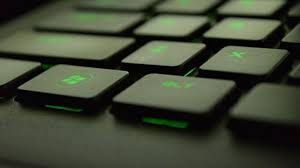The most effective method to revive, reset, or reestablish your PC
Assuming you're definitely disliking your PC, you can:
Invigorate your PC to reinstall Windows and keep your own records and settings. Invigorate likewise keeps the applications that accompanied your PC and the applications you introduced from the Microsoft Store.
Reset your PC to reinstall Windows yet erase your records, settings, and applications — aside from the applications that accompanied your PC.
Reestablish your PC to fix late framework transforms you've made.
Assuming you're experiencing difficulty beginning (booting) your PC, see Windows Startup Settings (counting experimental mode), and go to the "Get to Windows Startup Settings in the Windows Recovery Environment" area. You can revive, reset, or reestablish your PC from the Windows Recovery Environment.
If you have any desire to back up and reestablish your own documents utilizing File History, see Set up a drive for File
Before you start to refresh or reset your PC
As a rule, when you begin to revive or reset your PC, it'll complete all alone. Nonetheless, in the event that Windows needs missing records, you'll be approached to embed recuperation media, which is regularly on a DVD circle or thumb drive. Assuming that occurs, what you'll require relies upon your PC.
Assuming your PC accompanied Windows 8.1 or Windows RT 8.1, you'll require the circles or thumb drive that accompanied your PC. Check the data that accompanied your PC to check whether your PC producer gave these plates or media. At times, you could have made them when you initially set up your PC.
In the event that you don't have both of those, you can make them on the off chance that you have a USB thumb drive of 16 GB or bigger. Having a recuperation drive can help you investigate and fix issues with your PC, regardless of whether it won't begin. For more data, see Create a USB recuperation drive.
On the off chance that you updated your PC to Windows 8.1 or Windows RT 8.1 with a DVD, utilize that plate. On the off chance that you don't have Windows 8.1 or Windows RT 8.1 media, contact Microsoft SupportHistory.
Refresh, reset, or restore
Select any of the following for more detailed info.
REFRESH YOUR PC WITHOUT AFFECTING YOUR FILES.
If your PC isn't performing as well as it once did, and you don't know why, you can refresh your PC without deleting any of your personal files or changing your settings.
Note: If you updated your PC from Windows 8 to Windows 8.1 and your PC has a Windows 8 recuperation segment, invigorating your PC will reestablish Windows 8. You'll have to move up to Windows 8.1 after the revive has wrapped up.
Caution: Apps you introduced from sites, and DVDs will be taken out. Applications that accompanied your PC and applications you introduced from Microsoft Store will be reinstalled. Windows puts a rundown of taken out applications on your work area subsequent to reviving your PC.
To refresh your PC
-
Swipe in from the right edge of the screen, tap Settings, and then tap Change PC settings.
(If you're using a mouse, point to the upper-right corner of the screen, move the mouse pointer down, click Settings, and then click Change PC settings.) -
Tap or click Update and recovery, and then tap or click Recovery.
-
Under Refresh your PC without affecting your files, tap or click Get started.
-
Follow the instructions on the screen.
To revive your PCNote: You'll be asked to pick whether you need to eradicate information rapidly or completely. Assuming that you decide to delete information rapidly, a few information may be recoverable utilizing unique programming. Assuming that you decide to eradicate information completely, this will take more time yet it makes recuperating information doubtful.
Notes:
-
System Restore isn't available for Windows RT 8.1.
-
Windows consequently makes a reestablish moment that you introduce work area applications and new Windows refreshes, assuming the last reestablish point is more established than 7 days. You can likewise make a reestablish point physically whenever.
To reestablish your PC to a previous moment
-
Swipe in from the right edge of the screen, and then tap Search.
(If you're using a mouse, point to the upper-right corner of the screen, move the mouse pointer down, and then click Search.) -
Enter Control Panel in the search box, and tap or click Control Panel.
-
Enter Recovery in the Control Panel search box, and then tap or click Recovery.
-
Tap or click Open System Restore, and then follow the instructions.
-




Comments
Post a Comment